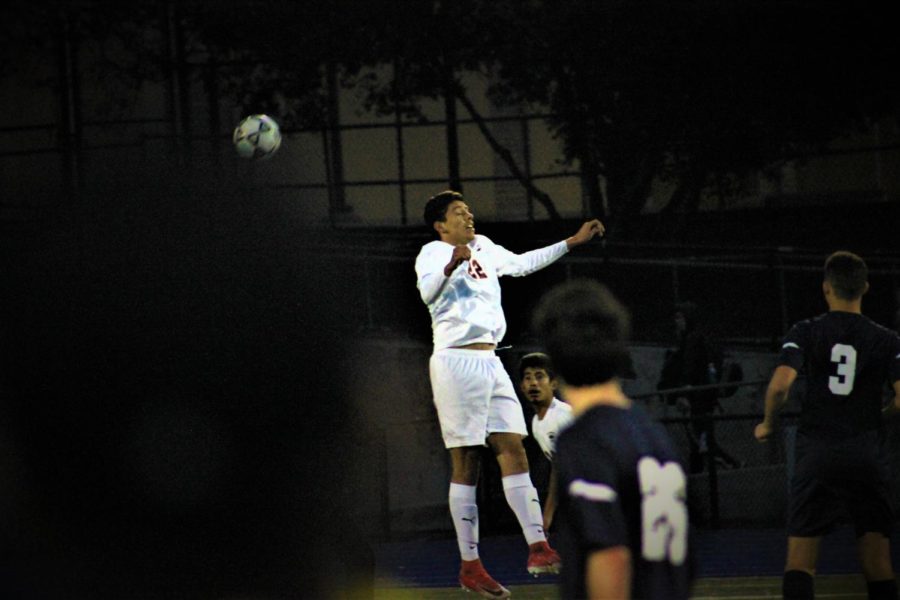The ball flys cross-field with an accelerating velocity as the wind carries it just left. As you box out your opponent, the ball rockets toward you. You leap, and your unprotected head makes contact with the ball. Your human brain, being completely disconnected from the human skull, bashes against the side of your head with immense force; similar to a marble in a mason jar.
Headers are a part of soccer. Many parents and athletes, however, are beginning to worry about the long term and short term effects headers have on the human body. Max Carothers, a high school student, and star forward on Albany Academy’s basketball team, decided to play basketball instead of soccer at age eleven after suffering from a major concussion. He was rushed to the E.R after being knocked unconscious during his last weekly AYSO game.
“All I remember was being confused and scared, and looking around the E.R having no idea why I was there and how I got there,” said Carothers.
Last night, Carlmont’s JV boys soccer team headed the ball over 25 times. This number is about average for a standard high school soccer game.
Coach Brian Freeman doesn’t discourage players from heading the ball, despite a few soccer based concussions of his own.
“I am aware of the effects and risks of headers, but they are a critical part of the game; like in last weeks game we lost 3-1 to Homestead high and two of their three goals were from headers,” Freeman said. “The subconcussive hits are more preventable. While I can’t do much to stop the huge hit immediately concussing my player, I can teach my kids to protect themselves with the proper technique from some sub-concussive blows.”
When done properly, a header is a safe way to redirect the ball. It requires practice and precision, in addition to the proper set of neck and shoulder muscles.
Granted, even when performed with correct technique, there is still a risk. Heading the ball while making contact with another player and miscalculating the ball’s angle are among other ways head injuries can still occur.
James McDowell, a Georgetown girls soccer coach, has coached for ten years. He explained his view on the header dilemma at the college level.
“A lot of the problem is technique and muscle development, you know, you have to look at the age group. Coaching college, maybe high school, they are mature enough to practice proper technique and their muscles are developed, specifically the neck muscles, but if I was coaching my ten-year-old son and his AYSO team, I wouldn’t want them taking that risk,” McDowell said.
McDowell is among many parents who fear head injuries from soccer. However, with any contact sport, an injury is almost inevitable, even with proper form.
Eric Nauman, the director of the Human Injury Research and Regenerative Technologies Laboratory at Purdue University, sought to change that by tracking two high school teams and one collegiate level team over a season. At every training session and match, players wore an xPatch sensor behind their right ears, allowing Nauman to monitor the G-force of every impact to the head. He found that the forces generated by heading back goal-kicks and goalkeeper’s punts were much higher than expected. Some registered between 50g and 100g. A similar amount of force seen in American Football players, when they crash into each other or punches thrown by boxers.
“The percentages of 100g hits was effectively the same between women’s college soccer and American football, which really surprised us. And while American football players tend to take more hits overall in a given practice session and game, the college soccer players were getting hit every day and so it evened out,” said Nauman.
There is inherent risk involved in playing contact sports, and it is one that many people of all ages choose to take. On one hand, this risk of injury can be feared due to lasting effects. Athletes can choose to avoid sports or certain activities altogether. On another hand, this risk can be mitigated by coaches that choose to instruct proper technique, in efforts to protect their players. Overall, I think the parents and athletes of Carlmont’s JV boys soccer team can be glad Coach Freeman has chosen the latter.


